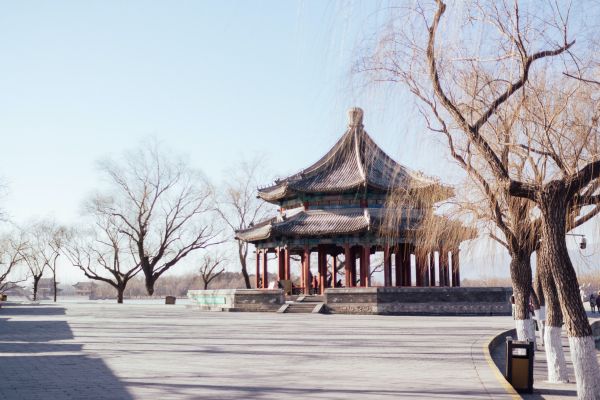
In China, the vast majority of arbitration institutions were initially established by local governments, which to some extent led to their dependence on local governments. Now China is trying to make arbitration institutions more independent of the government in order to enhance their market competitiveness.
1. The vast majority of arbitration institutions in China rely on the government.
According to a survey in 2007, 42.5% of the arbitration institutions needed to rely on governmental funds to cover parts or all of their expenditures while 57.5% of the arbitration institutions could afford all their expenditures. [1]
Another survey in 2009 found that two-thirds of the arbitration institutions personnel (including of the committee members of the arbitration institutions) are concurrently employed by or retired from the Communist Party of China (CPC) or the government; and two-thirds of the heads of arbitration institutions are also usually staffed by these persons who are concurrently employed by or retired from the CPC or the government. [2]
Since the arbitration institution relies on the government in terms of funds and personnel, the administrative organs have a strong influence on arbitration institutions.
2. Why do arbitration institutions rely on the government?
Before the enactment of the PRC Arbitration Law in 1994, there were two types of arbitration institutions. The first type was the arbitration institution internally established within the China Council for the Promotion of International Trade (CCPIT), including the China International Trade Arbitration Commission (CIETAC) and the China Maritime Arbitration Commission (CMAC). The second type was the arbitration institution internally established within the relevant government departments, which is substantially an administrative organ.
In 1994, China’s first Arbitration Law was promulgated, stipulating that the arbitration institution is independent of the government and its related departments and has no affiliation with such authorities; arbitration will be conducted independently and shall not be subject to governmental intervention. Accordingly, the arbitration institution should be independent of the government.
Since then, the State Council (China's central government) promulgated “the Plan for Reorganization of Arbitration Institutions” (重新组建仲裁机构方案, hereinafter referred to as “the Plan”) in 1995. [3] Under the guidance of the Plan, arbitration institutions across the country will be established or re-established since then. However, CIETAC and CMAC would remain subordinated to the CCPIT.
According to the Plan, other than CIETAC and CMAC, in the initial stage of establishment of other arbitration institutions, the government of the city where arbitration institutions are located shall provide funds, domiciles, and other resources. Afterward, arbitration institutions shall gradually strike a balance between income and expenditure; The members for the first arbitration committee shall be recommended by the relevant government departments and staffed by the personnel working at universities, scientific research institutions and the government.
Although the Plan posed such requirements only in the early period of the arbitration institution establishment, as a majority of over 200 arbitration institutions in China did not have enough cases to arbitrate, they had to rely on the governmental support. Therefore, in fact, most arbitration institutions have long followed the aforementioned operation mode even after their establishment.
In addition, in legal terms, most arbitration institutions are public institutions,[4] instead of corporations or other types of market-oriented entities. The public institution is regarded as a quasi-government organization. Therefore, the legal nature of the arbitration institution also leads to its inevitable connection with the government.
3. How does the legal profession in China think of the arbitration institution’s status in this regard?
At present, for arbitration institutions that rely mainly on government funding, they tend to be more government-oriented; for arbitration institutions that have already obtained sufficient market opportunities, they tend to be more market-oriented and maintain relative independence from the government. [5]
A 2009 survey showcased that lawyers and arbitrators in developed regions such as Beijing, Shanghai, and Guangdong province believed that arbitration should be completely separate from the government, which would be more conducive for arbitration institutions to participate in market competition and provide fair arbitration services, whereas lawyers and arbitrators in other less-developed regions believed that arbitration should not be completely independent of the administrative authority, because the administrative authority could make the arbitration more credible and the parties would be more respectful of the arbitral award. [6]
Correspondingly, nowadays, a few arbitration institutions in Chinese developed regions have already gained considerable independence and are therefore more international, such as CIETAC, Beijing Arbitration Commission (BIAC), Shanghai International Economic and Trade Arbitration Commission (SHIAC), and Shenzhen International Court of Arbitration (SCIA). By contrast, arbitration institutions in other cities have weaker independence. Despite these facts, the aforementioned institutions are all public institutions.
In addition, many arbitration institutions utilize the power of certain government departments to increase their caseload. For example, the government department will be likely to recommend certain industries to choose a certain arbitration institution, [7] which also leads to the fact that arbitration institutions show a more ambiguous attitude towards the government.
4. How would China change this phenomenon?
China is now facing the litigation explosion, and it is urgent for arbitration institutions to relieve the Chinese courts of their overburdened caseload. In order to make the parties more willing to choose arbitration, China needs to improve the credibility of arbitration. Making arbitration relatively independent of the government is an approach to achieve this goal.
To this end, the State Council issued “Several Opinions on Improving the Arbitration System to Strengthen the Credibility of Arbitration” (关于完善仲裁制度提高仲裁公信力的若干意见, hereinafter referred to as “the Opinions”) on 31 December, 2018, which is the first time that the Chinese government has made a systematic plan specifically for the development of arbitration in the past 20 years.
The Opinions requires that the arbitration committee shall be independent of the administrative organ and has no affiliation with the administrative organ. The arbitration committee shall not be regarded as an internal institution or a subordinate of any government department; the Communist Party of China, the government and their leaders or cadres shall support the arbitration committee to independently conduct arbitration in accordance with the law. They shall not interfere with the arbitral award and shall not interfere in the daily operation of the arbitration committee; if these leaders or cadres intervene in the arbitral award or intervene in the handling of specific cases, the arbitration institution shall record these acts and the supervisory authority shall investigate their liabilities.
In addition, in 2018, the National People's Congress also included the amendment of the PRC Arbitration Law into its legislation agenda, trying to solve the problems encountered by arbitration institutions by revision of the law. At present, the legal profession in China is discussing how to draft the revised law.
Therefore, China's arbitration institutions are currently facing major changes, and we will continue to pay close attention to future changes.
References:
[1] 韩永红.仲裁机构体制改革意见评析——一种文化的视角[J].仲裁研究,2009(02):14-20.
[2] 陈福勇.我国仲裁机构现状实证分析[J].法学研究,2009,31(02):81-97.
[3] 《重新组建仲裁机构方案》,http://www.people.com.cn/zixun/flfgk/item/dwjjf/falv/9/9-2-1-03.html
[4] Redefining public institutions, http://www.china.org.cn/opinion/2012-05/23/content_25450895.htm
[5] 汪祖兴.仲裁机构民间化的境遇及改革要略[J].法学研究,2010,32(01):112-125.
[6] 袁发强,刘弦,邓伟龙,王美文.中国仲裁机构往何处去——国内部分仲裁机构运行情况调研报告[J].北京仲裁,2010(01):113-141.
[7] 卢楠.关于我国仲裁制度去行政化的对策建议[J].法制与社会,2016(35):28-29.
Contributors: Guodong Du 杜国栋 , Meng Yu 余萌









